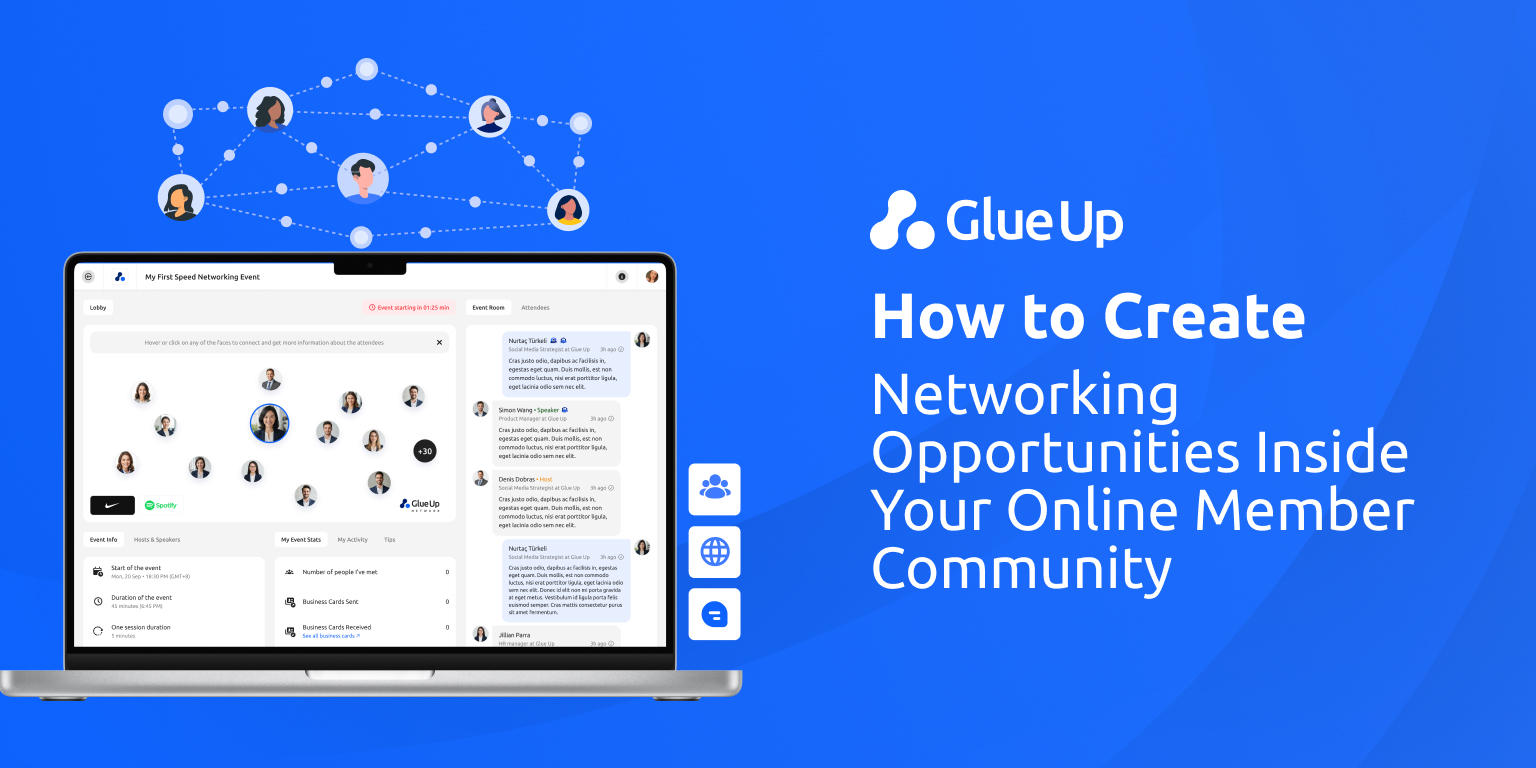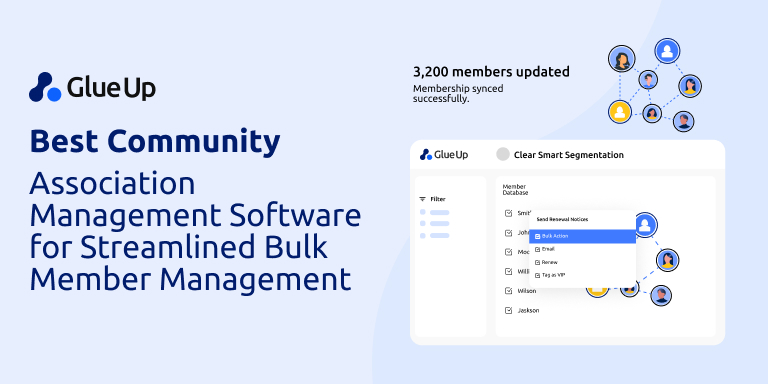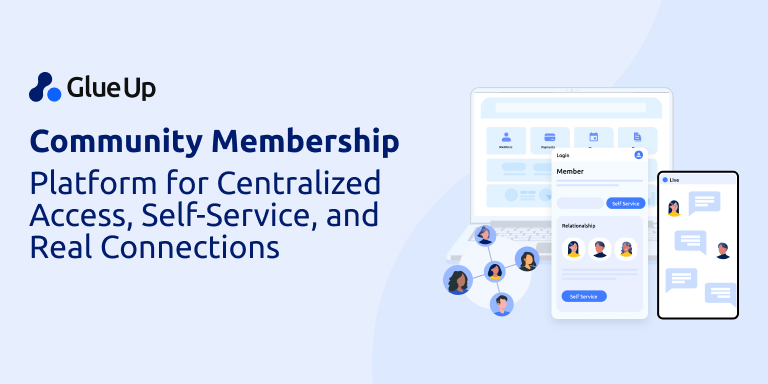
Growing a professional or industry community is a task that takes some light touches here and big ideas there. Members want to be active even if they’re not, and keeping them active is the key that helps gain new members, produce great events, and of course, grow revenue in the long term.
Engagement is the keyword for most community growth strategies so take some notes and try a few of these strategies at your own community.
Quick Reads
- Identify Your Audience
- Host Public Induction Meetings
- Create a Digital Home
- Create Engaging Content
- Host Events Regularly
- Identify Key Members
- Support Smaller Organizations
- Monitor Communication
Identify Your Audience

Identify your target audience so you’re not wasting resources for recruiting professionals who have no interest in joining your community. You can see this process as a funnel, where you filter out broader industries, then filter our unrelated disciplines, then experience levels, and so on.
You can do this very easily by using LinkedIn’s filtering process, or other professional networking social media sites, and drill down your ideal member by title, experience level, past companies, and so on.
Contrary to logical thinking, you might expect a larger audience to supply a larger amount of members, but in reality, it could cause a waste of promotional resources if a majority of that audience has no interest in your community. So, it's better to start with a narrow audience first and then expand as you learn more about the audience.
For example, a welder’s association may intend to have members who are inexperienced so that they can offer them courses by the association so expand their skills out of mig-welding and into industrial welding. So the audience will need to remove any and all construction titles not related to welding, identify lower-experience workers, and identify those with specifically mig-welding experience who could potentially move into industrial skillsets.
An audience like this would be inevitably quite small, but at the end of the day, the promotional material will be matched quite well and you’ll find yourself getting their attention a lot better than if you just blasted your promotion to those who are already industrial welders.
Host Public Induction Meetings

Induction meetings are important for new members to feel welcome and it’s a great way to orientate them with the organization. However doing this privately, a preferred method of a lot of chambers of commerce and associations, may actually be harmful to growth.
Very likely new members would like to invite others to watch the induction meetings, and by keeping the meeting open to the public, it could potentially entice those who may not have even heard of the organization before to join as well if it piques their interest.
Take photos of induction meetings and post them on social media, it helps show the community growth in a very real manner and it exposes the inner workings more to online audiences who might have an interest in joining as well.
Create a Digital Home

A ‘digital home’ for the community might scream “website” to you, but digital engagement is far past this singular point of online activity. Your community’s digital home has to stretch into social media, forums, chat apps, and more.
Keeping things digital should be quite clear in its value, but in a nutshell, it’s a great way to keep members engaged without having to meet in person. This is most extensively clear during the COVID-19 pandemic which has led to many thousands of businesses and organizations to take their communication entirely 100% online only.
Starting with a website, your digital home base for members should also be with engagement on social media, keep it updated with organization news and you’re sure to drive discussion. It’s also a great place to ask questions, answer questions,
Create Engaging Content

Creating engaging content through social media posts, videos, blog posts, white papers, media, or any other digital means is the perfect way to keep the community in the loop and active. At the very least you’re able to keep your community well informed and noticing that the community isn’t dead and maintains the community’s self-involvement.
Keeping the community up to date is good, but keeping them engaged is much more preferable though. So it’s important to make sure your content is engaging and thought-provoking. Surveys on social media, for instance, can give some helpful feedback quickly, or maybe a blog post that explores a rumor among the community and spurs discussion.
Engagement keeps community members from getting bored and forgetting about the community, and generally, it makes them happy to be engaged. In fact, the best definition of “community engagement” is “member happiness”. So make sure when you create content for your community, you ask yourself “would this make me happy to be engaged in?”.
Host Events Regularly
Hosting regular events is another key type of content that deserves its own strategy. Events are a phenomenal way of forcing people to engage. It’s a bit harsh-sounding, but at an event, socializing can oftentimes lead to a lot of professional networking outcomes that are most usually quite positive. It’s your way of forcing those who attend to engage with each other so that more ideas and topics can come up.
Hosting regular events is just like posting regular topics, and in doing so you deliver a sense of organization and real-world value that’s not found on a screen or mobile device. Although, the recent COVID-19 situation has proven that online events are valuable in other situations like long-distance members and so on.
The regularity also can deliver a feeling of consistency, though it’s smart not to rehash old events and to use different event formulas to keep things shaken up. Events are also a great way to ask your most staunchly engaged members to help volunteer or even speak at the event, reducing headaches in headhunting speakers yourself.
Identify Key Members

It’s important to identify key members of your community and engage them into action that gains even more members. These hyper-engaged community members are likely one of your strongest allies to growth for any professional organization, and some considerations could be made to make use of their engagement for everyone’s benefit.
As we said earlier, events also can benefit from an engaged member being asked to speak or moderate at events. It’s someone who likely understands the audience and very likely willing to do anything you ask of them.
In some industries, even highly engaged members have been asked to join the organization full time as staff as a reward for their high engagement and work towards bettering the community at large. It’s also a great chance to ask these highly engaged members to share news and promote the community as well.
Support Smaller Organizations
It’s also important to support smaller and tertiary organizations that are related to your professional community. It’s a strategy that makes your community look like the voice of the industry and other professionals may look to your community first for news, topics, trends, and more.
Smaller organizations are also helpful in introducing tertiary industries to your community for a sort of synergy between related fields. By helping smaller organizations grow, your community can find other benefits in public relations as well as attracting new members.
Monitor Communication

At the end of the day, monitoring the communication and discussion of your community is extremely important for you to understand what needs to be done to avoid problems or upcoming trends that can turn into topics of discussion or even events centered on trends.
This is where having a digital home becomes important. Having a digital home doesn’t just mean a place where they can communicate, but to communicate freely (within the bounds of your community guidelines of course.). There could even be opportunities for key members to provide real values to your community through being speakers or moderators at events or volunteering to take on responsibilities for the organization.
If you want to grow your professional community, it's important to know what they're interested in, what events they enjoy, and what content they love. It can be tough to track these data points when you're growing, so it's important to use a CRM of registered users on your platform, an email marketing platform for communication, and ticketing and management for your events. Consider booking a demo with us at Glue Up to see how Glue Up's digital platform has been helping grow professional communities across the globe. Our mission is to transform the way professional communities enable and enrich relationships.



